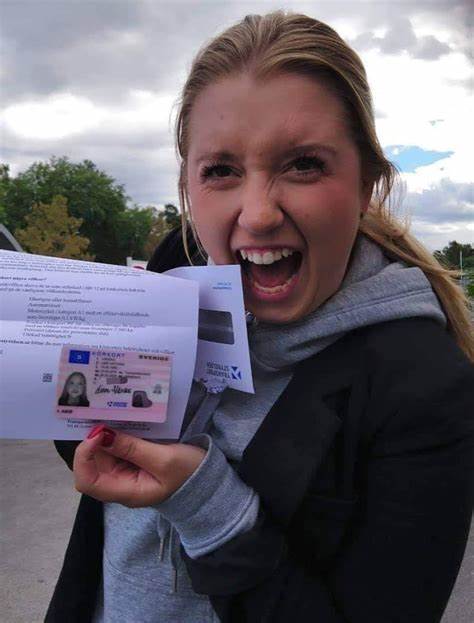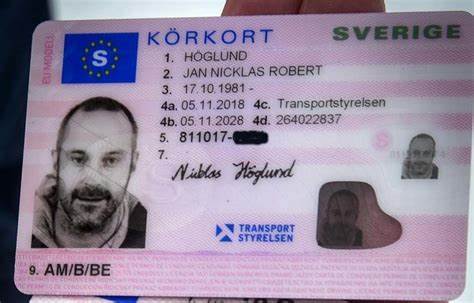
Navigating the World Without a Driver's License: Exploring Alternatives and Implications
In today's world, where mobility is a cornerstone of daily life, the idea of living without a driver's license might appear difficult. However, for some individuals, the choice to forgo a driver's license is a conscious choice driven by different elements, consisting of ecological issues, cost, and individual choice. This post digs into the options to driving and the ramifications of living without a driver's license, providing a detailed guide for those considering this lifestyle.

Comprehending the Decision
Picking not to have a driver's license is an individual choice that can originate from numerous reasons. For some, it's a dedication to lowering their carbon footprint and promoting sustainable living. Others discover the expense of owning and preserving an automobile excessive, while some simply prefer the convenience and flexibility of other modes of transport. Despite the motivation, living without a driver's license requires mindful planning and a desire to adapt.
Alternatives to Driving
Mass transit
- Buses and Trains: Public transportation systems, such as buses and trains, are often the most reliable and economical alternatives. They are available in many city locations and provide a structured method to browse cities and rural regions.
- Subway and Light Rail: In larger cities, subways and light rail systems provide fast and efficient travel, often bypassing rush hour and minimizing travel time.
Ride-Sharing Services
- Uber and Lyft: These popular ride-sharing apps provide on-demand transport, making it easy to navigate without a car. They are particularly beneficial for late-night travel and in areas with limited mass transit.
- Carpooling: Joining or forming carpool groups can minimize expenses and environmental effect. Numerous community platforms and apps help with carpooling for regular commutes.
Bicycles and E-Scooters
- Bikes: Cycling is a healthy and environment-friendly way to take a trip, specifically for much shorter ranges. Lots of cities have actually committed bike lanes and bike-sharing programs to motivate this mode of transport.
- Electric Scooters: E-scooters are a trendy and practical choice for fast, brief trips. They are often readily available through rental services in urban areas and can be an enjoyable option to standard modes of transport.
Strolling and Jogging
- Walking: For those living in walkable neighborhoods, walking is a basic and reliable method to stay active and get around. It's totally free, requires no special devices, and benefits the environment.
- Jogging: Similar to strolling, jogging can be a healthy and low-cost method to take a trip, particularly for short distances.
Electric and Hybrid Vehicles
- Electric Scooters and Bikes: For those who still want the convenience of an individual vehicle but are concerned about the environment, electric scooters and bikes are a feasible alternative. They are low-maintenance and produce fewer emissions.
- Hybrid Cars: If the choice to avoid a driver's license is primarily due to ecological concerns, however the need for a car is inevitable, hybrid lorries use a middle ground. They integrate traditional gasoline engines with electrical motors to minimize fuel consumption and emissions.
Telecommuting and Remote Work
- Work from Home: Many companies now use remote work choices, permitting employees to work from home or other locations. This can considerably minimize the requirement for daily travelling and the associated expenses.
- Virtual Meetings: Technology has made it possible to conduct organization conferences and other interactions virtually, further minimizing the need for travel.
Ramifications of Living Without a Driver's License
Financial Savings
- Lowered Vehicle Costs: Not having a car suggests avoiding expenditures such as car payments, insurance, upkeep, and fuel.
- Public Transportation Costs: While public transport does have costs, they are generally lower than those related to owning a car.
Environmental Impact
- Lower Carbon Emissions: By preventing making use of individual cars, individuals can considerably decrease their carbon footprint, contributing to a more sustainable environment.
- Lowered Traffic Congestion: Fewer automobiles on the road can cause minimized traffic jam, making travel more effective for everyone.
Health Benefits
- Increased Physical Activity: Using options like strolling, jogging, and cycling can improve physical health and psychological well-being.
- Decreased Stress: Avoiding the day-to-day troubles of driving, such as traffic and parking, can cause a more unwinded and hassle-free way of life.
Social and Community Engagement
- Neighborhood Connections: Relying on public transport or ride-sharing services can cultivate a sense of community and social interaction.
- Support for Local Businesses: Walking or cycling to regional services can assist support the local economy and minimize reliance on large, environmentally unfriendly corporations.
Legal and Practical Considerations
- Recognition Issues: In numerous nations, a driver's license functions as a primary form of recognition. People without a license might need to carry alternative types of ID, such as a passport or state-issued ID card.
- Travel Restrictions: Without a driver's license, travel to remote locations or places with limited public transport can be challenging. Preparation ahead and utilizing alternative transportation techniques is essential.
FAQs
Q: How can I get around if I live in a backwoods without a driver's license?
- A: In rural locations, options like ride-sharing services, carpooling, and public transportation may be limited. Consider signing up with community groups or online platforms to find local carpooling choices. Electric scooters and bikes can also work for much shorter distances. In addition, lots of rural locations have community transportation services that can be accessed for essential trips.
Q: Can I still take a trip globally without a driver's license?
- A: Absolutely. A driver's license is not required for the majority of international travel. Nevertheless, you might require a passport or other forms of identification. For nations where driving is required, you can rent a car with a valid driver's license or usage local transport services.
Q: What are the very best apps for discovering ride-sharing and carpooling alternatives?
- A: Popular apps for ride-sharing include Uber, Lyft, and Bolt. For carpooling, Waze Carpool, Ridester, and Scoop are extremely suggested. These apps frequently offer real-time info on offered rides and help link you with chauffeurs heading in the very same direction.
Q: How do I manage without a driver's license if it is required for numerous types of identification?
- A: In numerous places, a state-issued ID card or a passport can function as a primary form of recognition. It's also a good idea to bring numerous types of ID, such as a credit card or a voter registration card, to guarantee you are prepared for numerous circumstances.
Q: KöP KöRkort Utan Test Are there any health risks connected with using public transport?
- A: While public transport can expose individuals to a higher danger of infectious illness, specifically in congested conditions, the benefits typically outweigh the dangers. Practicing good hygiene, such as washing hands routinely and wearing a mask, can help reduce these dangers. Furthermore, numerous public transport systems have actually implemented precaution to protect guests.
Q: What are the environmental benefits of not driving a car?
- A: Not driving a car can considerably minimize your carbon footprint. Cars and trucks are a major source of greenhouse gas emissions, and by selecting mass transit, biking, or strolling, you can contribute to a much healthier environment. This also helps in reducing air pollution and traffic blockage, improving overall lifestyle.
Living without a driver's license is a possible and often advantageous choice for lots of individuals. By exploring and using alternative modes of transportation, one can save money, reduce their environmental impact, and enhance their health and well-being. While there are obstacles, such as browsing identification and travel issues, the benefits typically make the effort beneficial. Whether driven by personal worths or practical considerations, the choice to forgo a driver's license can lead to a more sustainable and fulfilling way of life.
Additional Resources
- Public Transportation Apps: Transit, Moovit, Citymapper
- Biking and Walking Apps: Strava, MapMyRide, Google Maps
- Neighborhood Carpooling Platforms: Waze Carpool, Ridester, Scoop
- Remote Work and Telecommuting Tools: Zoom, Microsoft Teams, Slack
By welcoming these alternatives, people can develop a way of life that lines up with their values and requirements, adding to a more sustainable and connected world.


